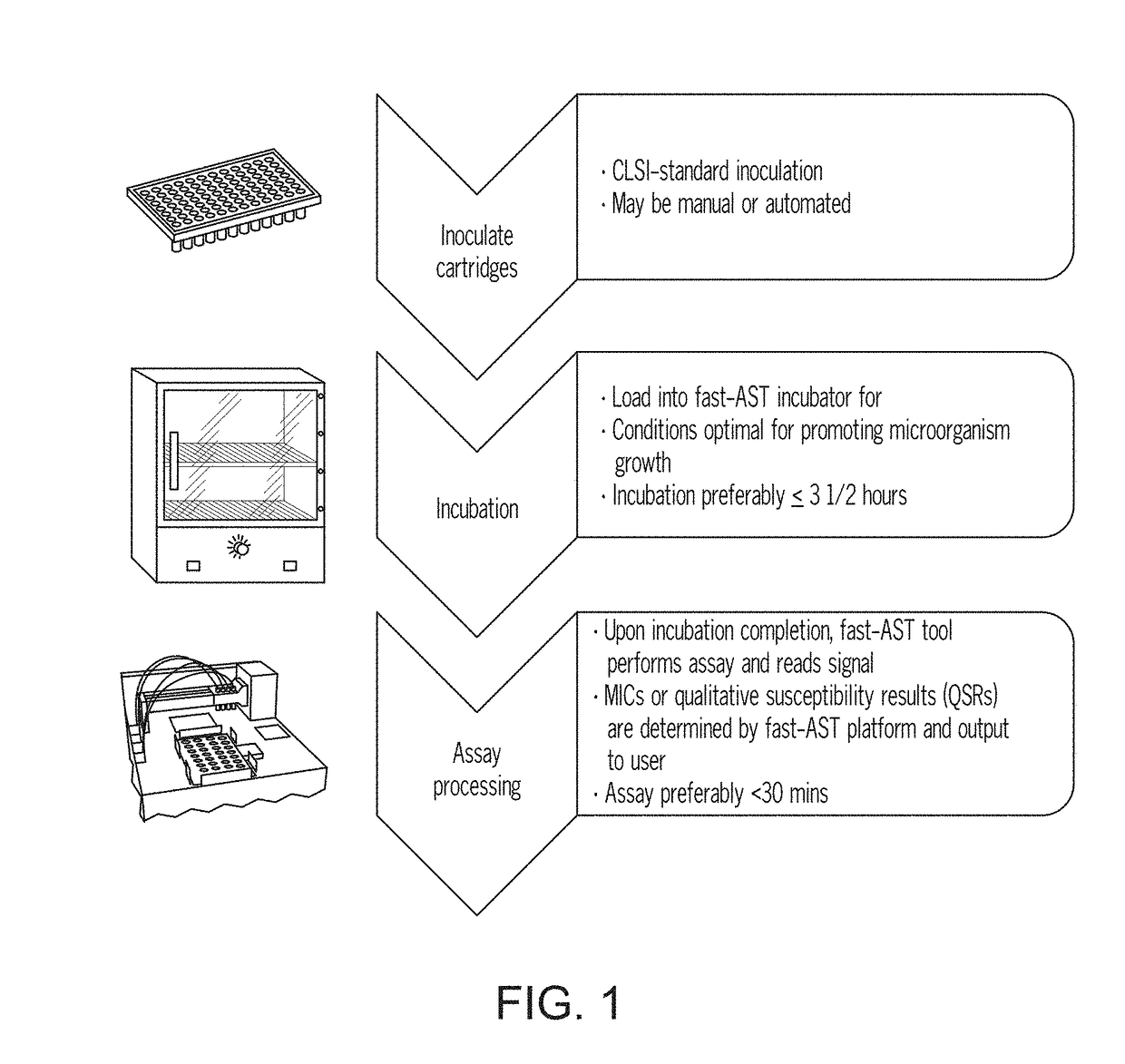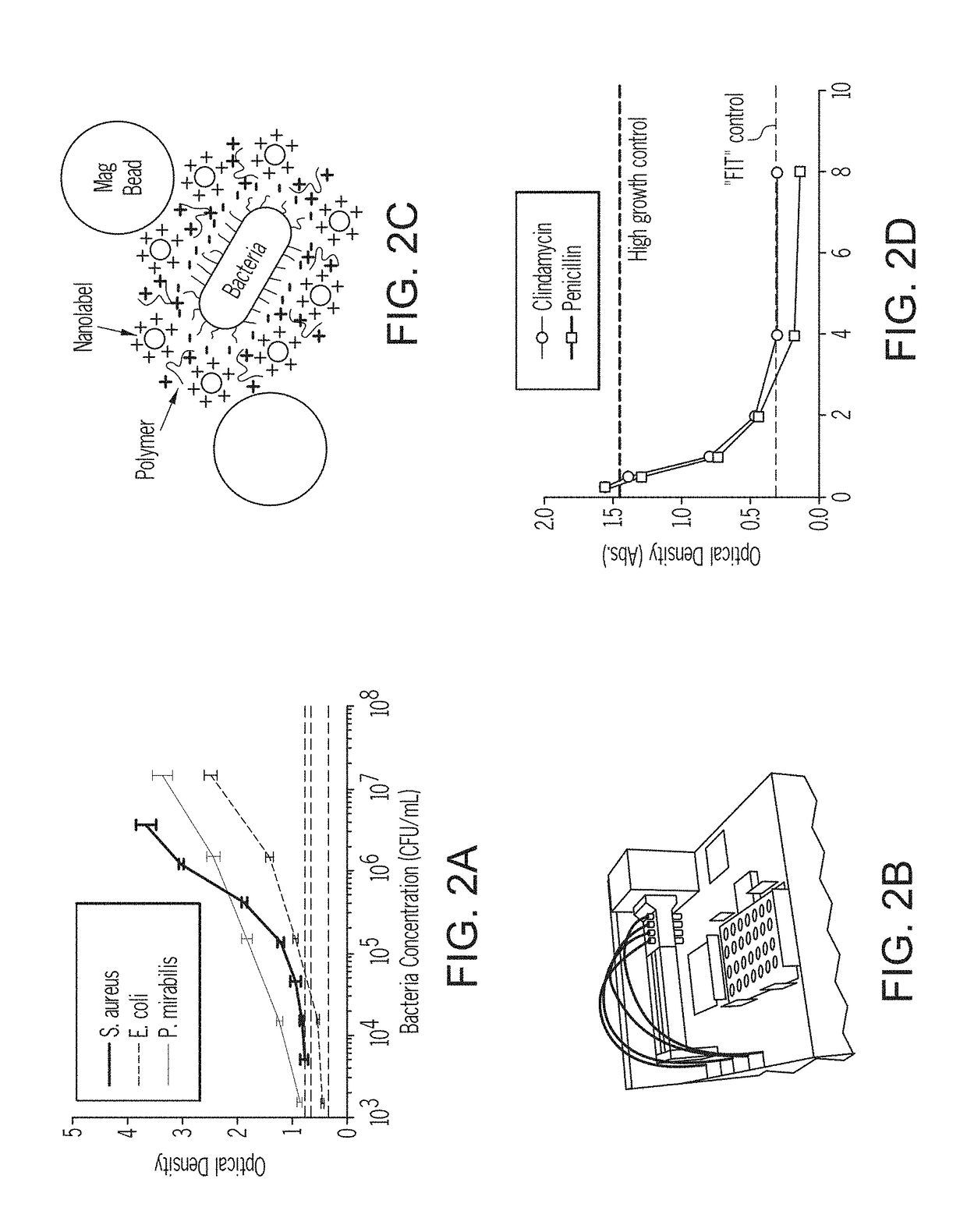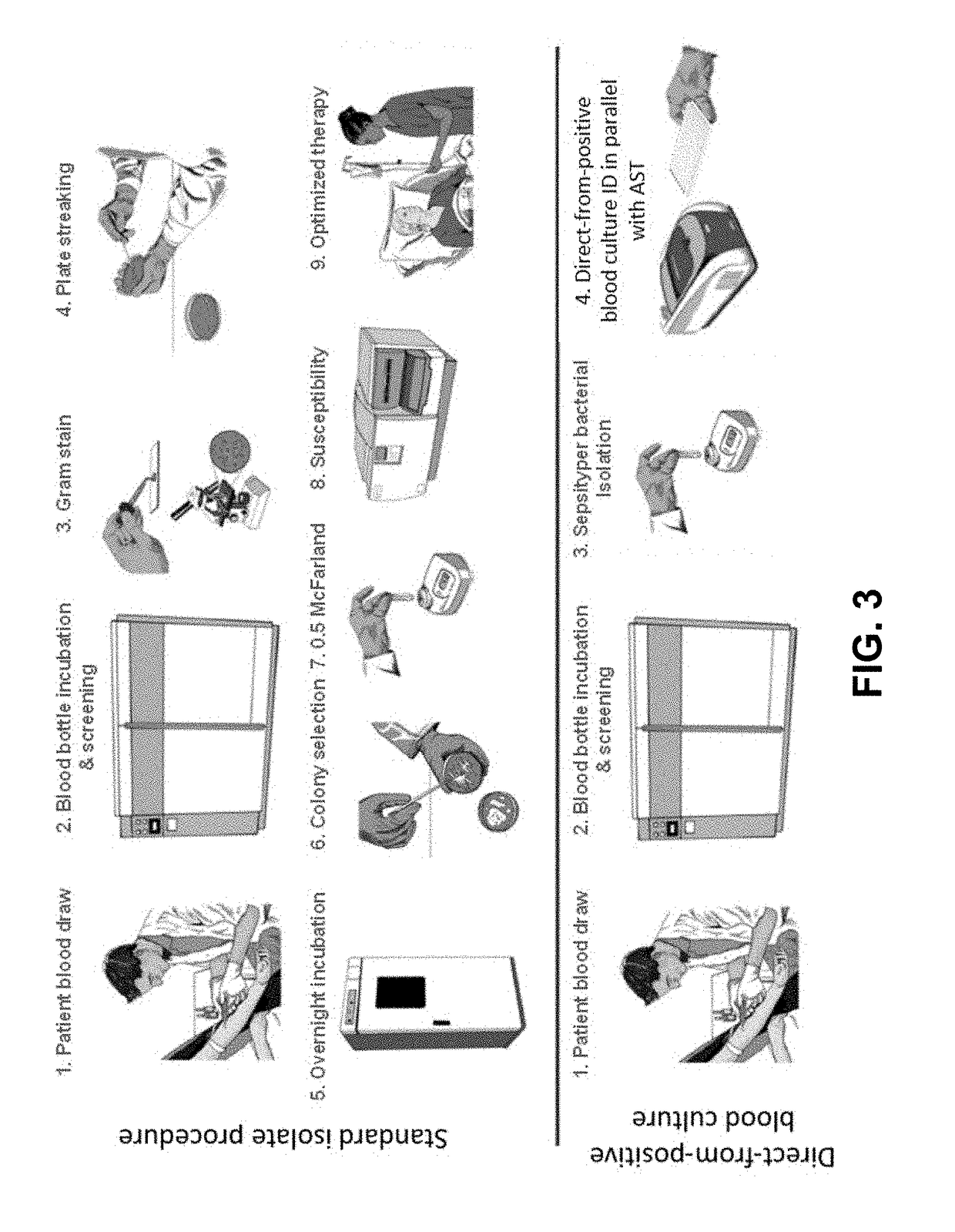Methods for rapid antibiotic susceptibility testing
a technology of antibiotic susceptibility and rapid determination, applied in the field of rapid antibiotic susceptibility testing, can solve the problems of poor clinical outcomes, increased morbidity, mortality, and healthcare costs of infected patients, and improve the safety of patients, the effect of rapid antimicrobial susceptibility testing and less time to obtain results
- Summary
- Abstract
- Description
- Claims
- Application Information
AI Technical Summary
Benefits of technology
Problems solved by technology
Method used
Image
Examples
example 1
nt Invention Provides Rapid and Accurate Determination of an Antimicrobial's Minimum Inhibitory Concentration (MIC)
[0423]In this example, the present invention for rapidly determining an antimicrobial's minimum inhibitory concentration (MIC) against Staphylococcus aureus or Pseudomonas aeruginosa was compared to a standard method requiring an overnight incubation of a S. aureus or P. aeruginosa.
[0424]A culture of Staphylococcus aureus (ATCC strain 29213) was grown using Mueller-Hinton (MH) broth overnight at 37° C. with vigorous shaking. Concurrently, two sterile 96-well microplates were prepared with serial dilutions of clindamycin from 32 μg / ml to 0.125 μg / ml and a no-clindamycin control, all in MH broth. The S. aureus concentration from the overnight culture was then set to 5×105 CFU / ml using the McFarland standard technique for optical density readings at 600 nm. The microplates, each well containing 200 μL were inoculated with prepared dilutions of antimicrobial and incubated ...
example 2
nt Invention Provides Rapid and Accurate Determination of an Antimicrobial's Minimum Inhibitory Concentration (MIC) for Antimicrobial-Resistant Bacteria
[0428]In this example, the present invention was used to compare the MICs for P. aeruginosa, S. aureus, and E. coli strains that are antimicrobial resistant to, respectively, the MICs for P. aeruginosa, S. aureus, and E. coli strains that are antimicrobial-sensitive.
[0429]The MIC for the susceptible P. aeruginosa strain, ATCC 27853, was determined as described in Example 1, with the key difference that imipenem was used as the antimicrobial (a serial dilution from 32 μg / ml to 0.125 μg / ml was used). The MIC for the resistant P. aeruginosa strain, ATCC BAA-2108, was determined similarly. The same 96-well microplate was used for both strains, with 48 wells dedicated to each strain. The experiment was repeated 3 times with similar results, and the resulting data are shown in FIG. 7. The MIC for the susceptible strain is 2 μg / ml; the MIC ...
example 3
nt Invention Provides a Detectible Signal at Microbial Concentration that is Two-Hundred Fold Less Concentrated than is Required for a Standard Method
[0432]In this example, the microbial concentration required to provide a detectable signal in present invention for was compared to a standard method requiring an overnight incubation of a S. aureus.
[0433]S. aureus was cultured overnight as described in Example 1. A serial dilution of the overnight colony was made in a 96-well microplate and the absorbance was read at 600 nm. These values were compared with McFarland standards to obtain the bacteria concentration in CFU / ml. The quantifiable region of the curve is shown, in FIG. 9 (OD600); the experiment was repeated three times with similar results. A similar dilution series of S. aureus was treated with S. aureus-specific signaling agents for 20 min, as described in Example 2. Following Example 2's procedure, the microorganisms were centrifuged and washed three times, and a detection...
PUM
| Property | Measurement | Unit |
|---|---|---|
| concentration | aaaaa | aaaaa |
| enantiomeric excess | aaaaa | aaaaa |
| enantiomeric excess | aaaaa | aaaaa |
Abstract
Description
Claims
Application Information
 Login to View More
Login to View More - R&D
- Intellectual Property
- Life Sciences
- Materials
- Tech Scout
- Unparalleled Data Quality
- Higher Quality Content
- 60% Fewer Hallucinations
Browse by: Latest US Patents, China's latest patents, Technical Efficacy Thesaurus, Application Domain, Technology Topic, Popular Technical Reports.
© 2025 PatSnap. All rights reserved.Legal|Privacy policy|Modern Slavery Act Transparency Statement|Sitemap|About US| Contact US: help@patsnap.com



